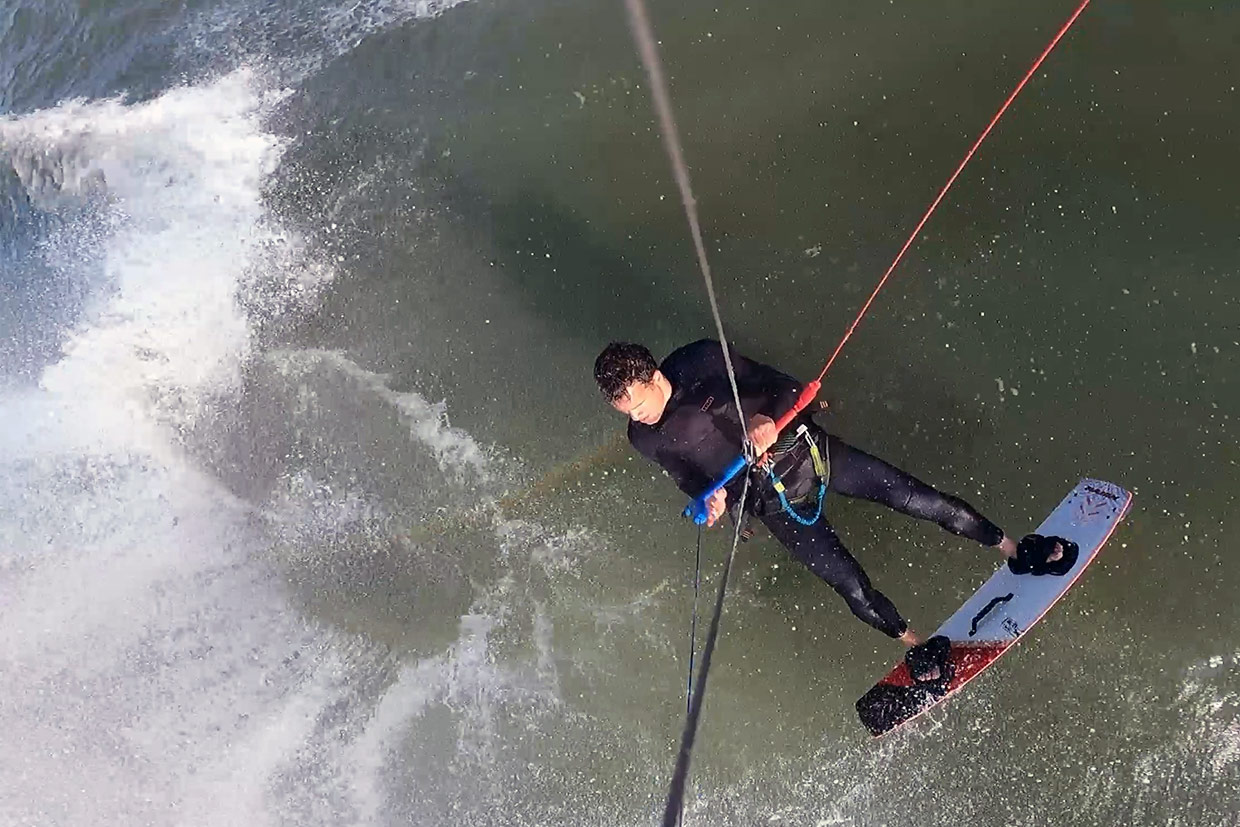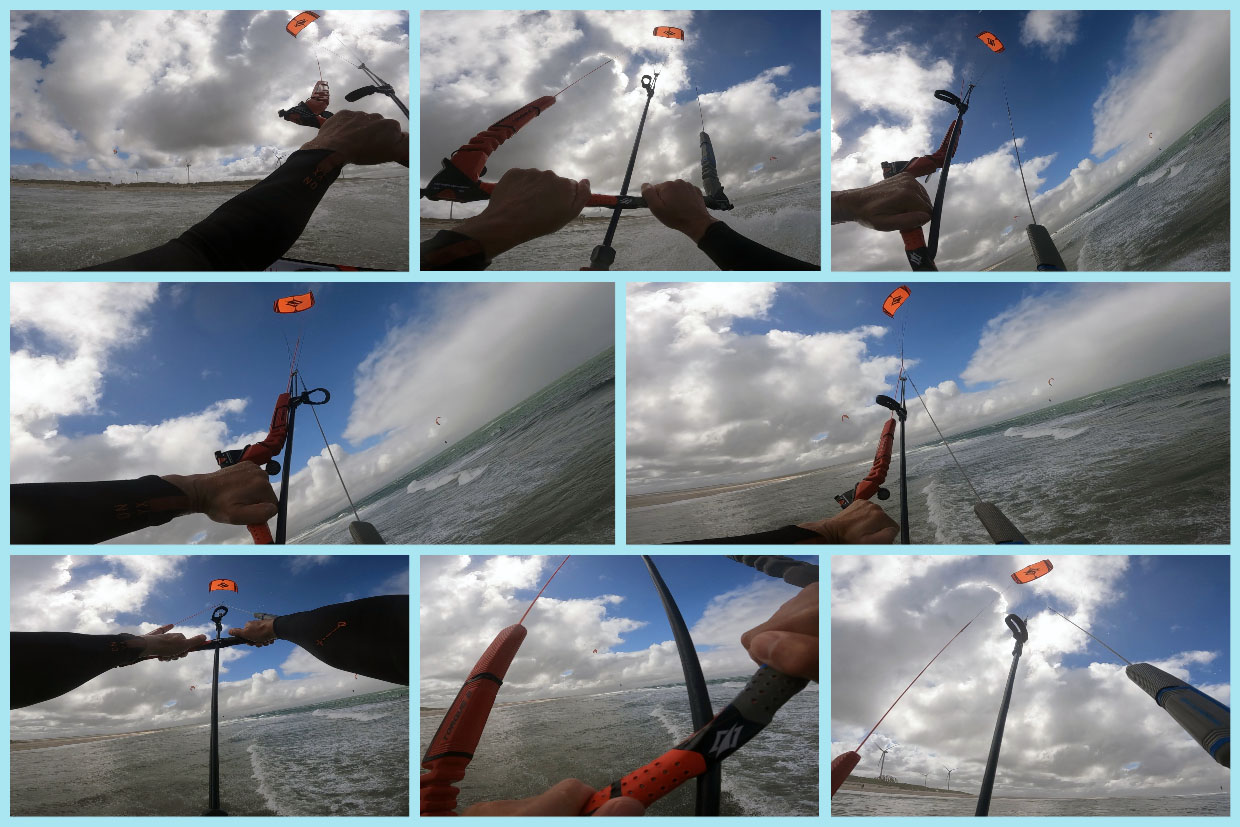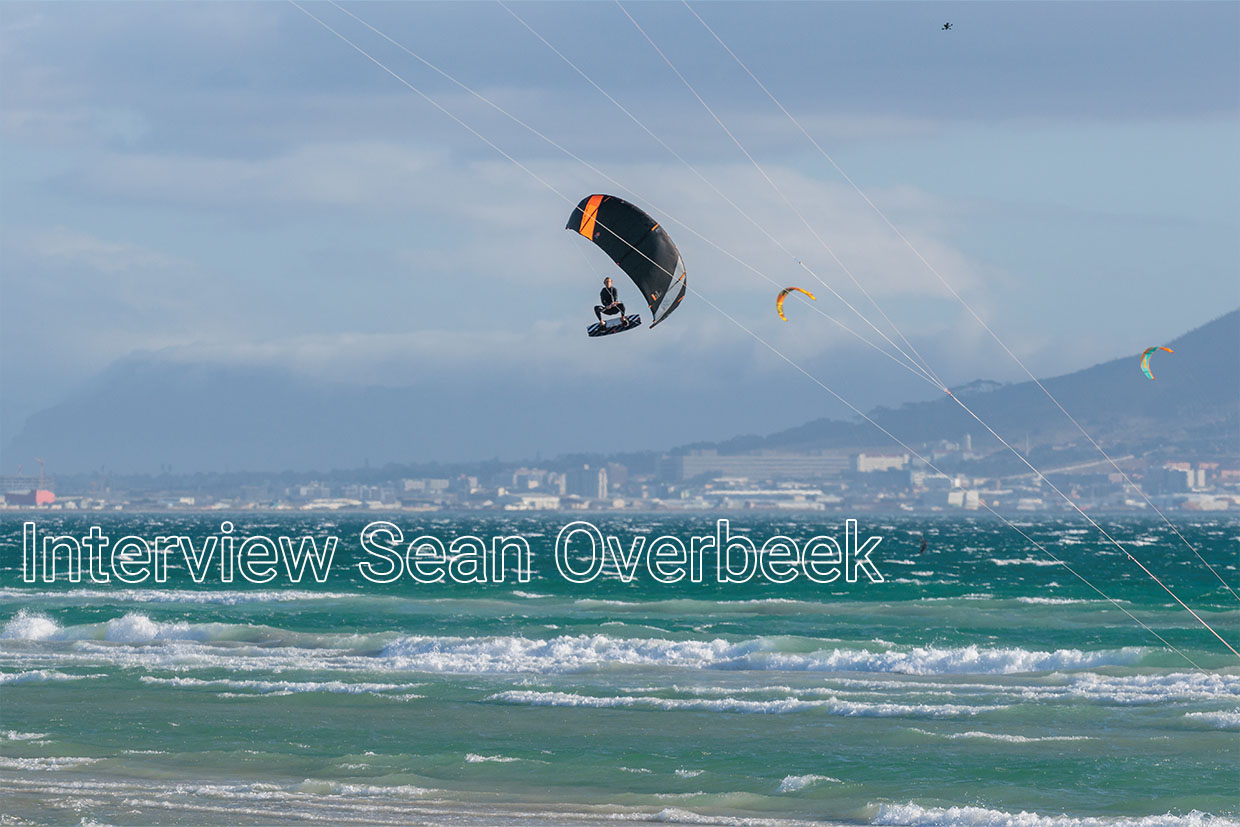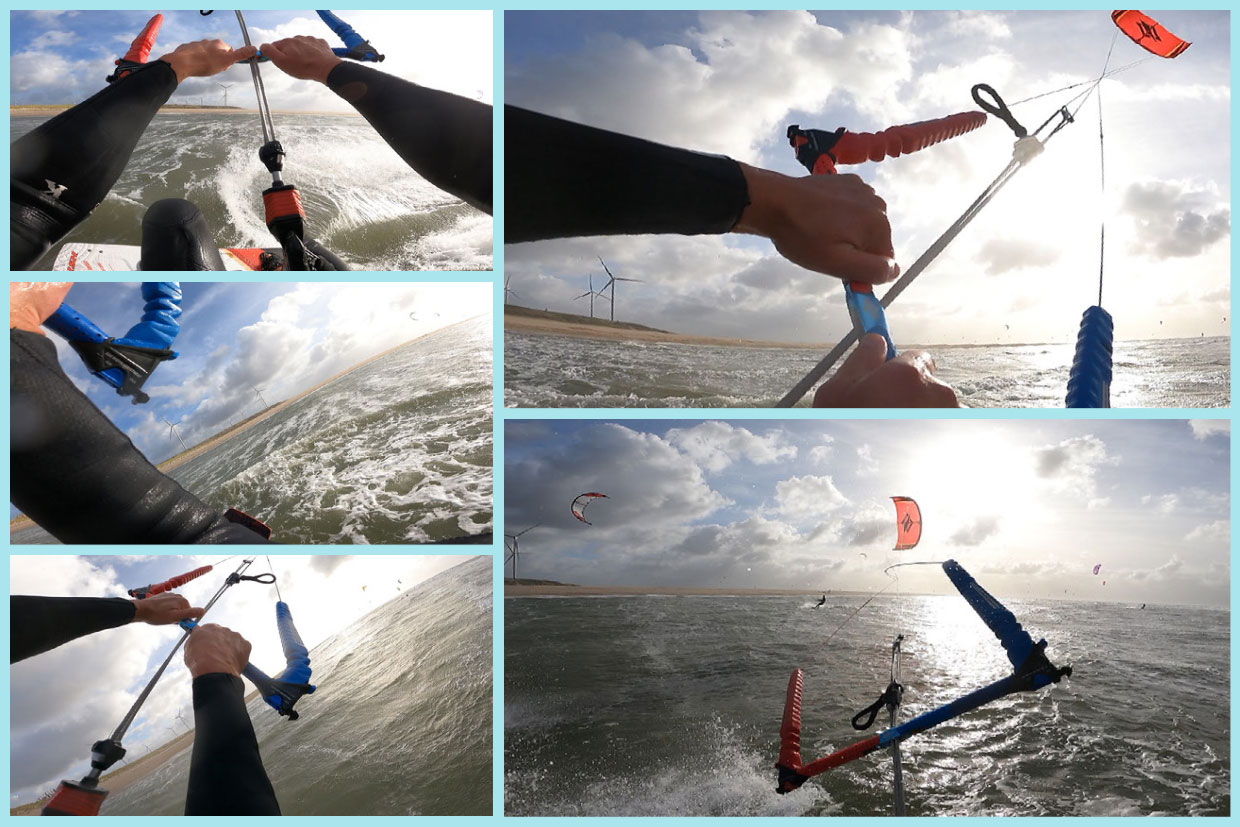A kitesurfing trick that gives me a wonderful and satisfying turn is a 'toeside to heelside' turn. At speed and deployed very aggressively in the surf or in a wave, it is complete. With a little practice you can pull a meter high water curtain. With even more satisfaction as a result. Especially if you are also treated to a homemade rainbow, which often occurs when the sun is shining. It is a kitesurf trick that has never bored me. That's why I'm trying to explain it to you in this special. Are you in?
In a wave or in the surf, the timing is ideal if you can turn your kiteboard and hit the top of the wave about halfway through the length of your kiteboard. Then you get the most beautiful spray. The advantage of this is that the nose of your kiteboard can stay in front of the wave and the speed of the wave also gives you direct speed to kitesurf in the other direction.
Side to heel side bend
Time required: 1 minute
Right conditions side to heelside bend
You can always make a side to heelside bend. You don't need a favorable wind direction or wave for that. If you make it aggressive, you can always make something beautiful with a small water curtain as a bonus. However at side onshore wind, in the surf, and with the right timing, this trick becomes really beautiful. Then you can also expand it in the waves at sea. This explanation is not about that, but based on the explanation and images you can imagine how beautiful that is.
- Toeside kitesurfing
With side kitesurfing, distributing your weight is important. Once you hang too far forward while kitesurfing, your kiteboard will bite quite quickly. If you lean back too far, you will pull your kiteboard out of the water with the nose and brake hard. Then you also have the effect of bending your ankles. You can play with this and that is often necessary. However, the basis is a good distribution of your weight so that you can maintain a reasonable speed and still maintain control.

- Switching from whole to toeside
The starting point for this truck is that you are already sailing sideways. You must master this. You do this by not having your kite too low. After all, you need a little bit of lift to jump from heelside to toeside. With your kite at 10 or 2 o'clock, depending on your heading, you tighten the bar a little for some extra power. At the same time, make a jump with your board by drawing your knees in slightly and then straightening them. As soon as you have less pressure on the water, you can turn your back foot forward so that you can continue kitesurfing toeside. In fact, you don't even have to jump. If you only have very little pressure on your board to make this move.
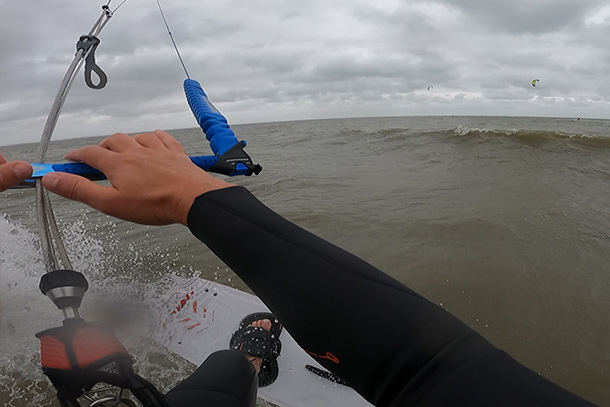
- Foot straps not too tight
In the aforementioned process it is important that you have a little space in the foot straps. This way your kiteboard is slightly more flexible at your feet and you can let it glide through the water. This helps to keep control.
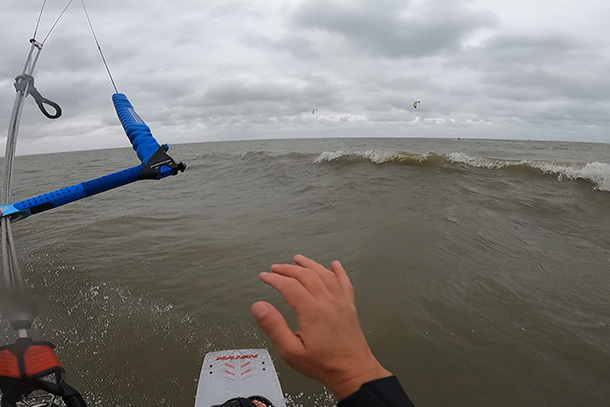
- Start with a calm piece of water
You don't need to be able to kite surf hundreds of meters for this trick. Start with somewhat flatter water and, for example, a small surf. If you are further with this trick, you can also jump from heelside to toeside on a wave and immediately turn around again when landing on the wave. As seen in the introduction to the video. Then you make extra impact on the wave by placing your kiteboard perpendicular to the wave. This gives a huge boost to the trick.
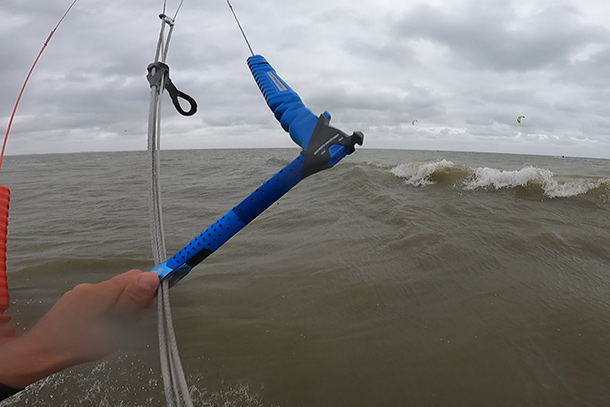
- Timing: don't bother anyone
Take a look around you beforehand to see if you can turn at full speed this way. You can based on the kitesurf priority rules say that you have right of way because you are kitesurfing on a wave. However, you are going to turn around here and then you always first check whether this is also possible. This is not possible, for example, if other kitesurfers are kitesurfing in the same direction close behind you. If you don't bother other kite surfers, you are free to go for it.

- Timing: the kiteboard on the wave
Timing the reversal is of course the most accurate when a wave is breaking. Just before it rolls. Start with small surf waves or even on a patch of flat water. Because the game with turning your kiteboard and the position of your kite is also part of this. In a wave or in the surf, the timing is ideal if you can turn your kiteboard and hit the top of the wave about halfway through the length of your kiteboard. Then you get the most beautiful spray. The advantage of this is that the nose of your kiteboard can stay in front of the wave and the speed of the wave also gives you direct speed to kitesurf in the other direction.
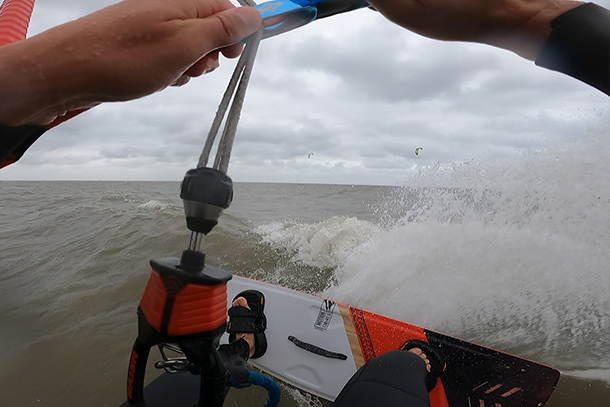
- Timing: redirecting the kite
With regard to the kite, you have to make sure that the moment you start the turn with your kiteboard is also the moment that you send the kite aggressively but controlled from 2 or 10 hours to the other side. It depends on the strength of the wind whether you have to send it over the top of the wind window or can send it straight through the wind window to 2 or 10 o'clock. The lower the kite when turning, the more aggressive the trick becomes.
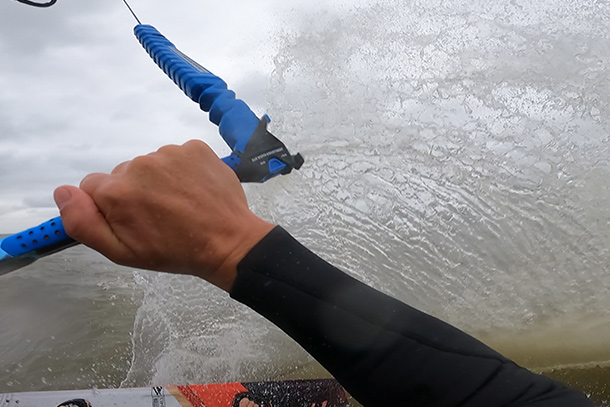
- Keeping balance and making speed
As I already stated, the intention is that the kiteboard continues to slide nicely and the nose of the kiteboard remains in front of the wave. If this doesn't work, you crash through the wave or over it. Then you often lose the speed. No point, but a smooth curve at speed is of course more beautiful. What you see me doing is trying to keep the nose of the kiteboard out of the water. With this I try to prevent the nose from snapping into the water or into the wave. I also try to make the spray as large as possible because I keep putting a lot of pressure on the back of the kiteboard. In addition, I try to flatten the kiteboard immediately after the turn to regain speed.
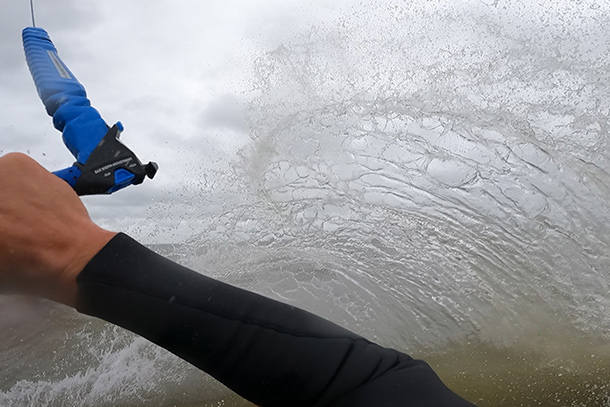
- Send in a kite and continue kitesurfing
At the same time as keeping balance and speed described above, the kite moves to the other side of the wind window. Maybe up to 3 or 9 am but this will vary each time. This is necessary to maintain and/or gain power and speed. This is also necessary to get back on course and to walk high.
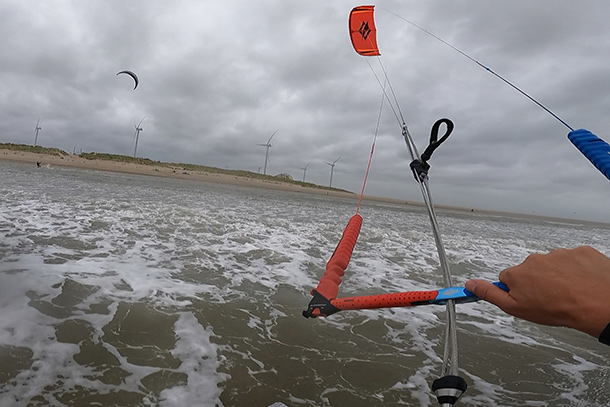
Which kitesurf trick do you want to learn? Let us help…
Do you have a kitesurfing trick that you would like to learn and want some explanation about? Let us know. We are really not the best kite surfers, but we like to guide kite surfers and kite surfers in the making. And we are in contact with the best kite surfers who might want to give us, and therefore also you, a helping hand.


